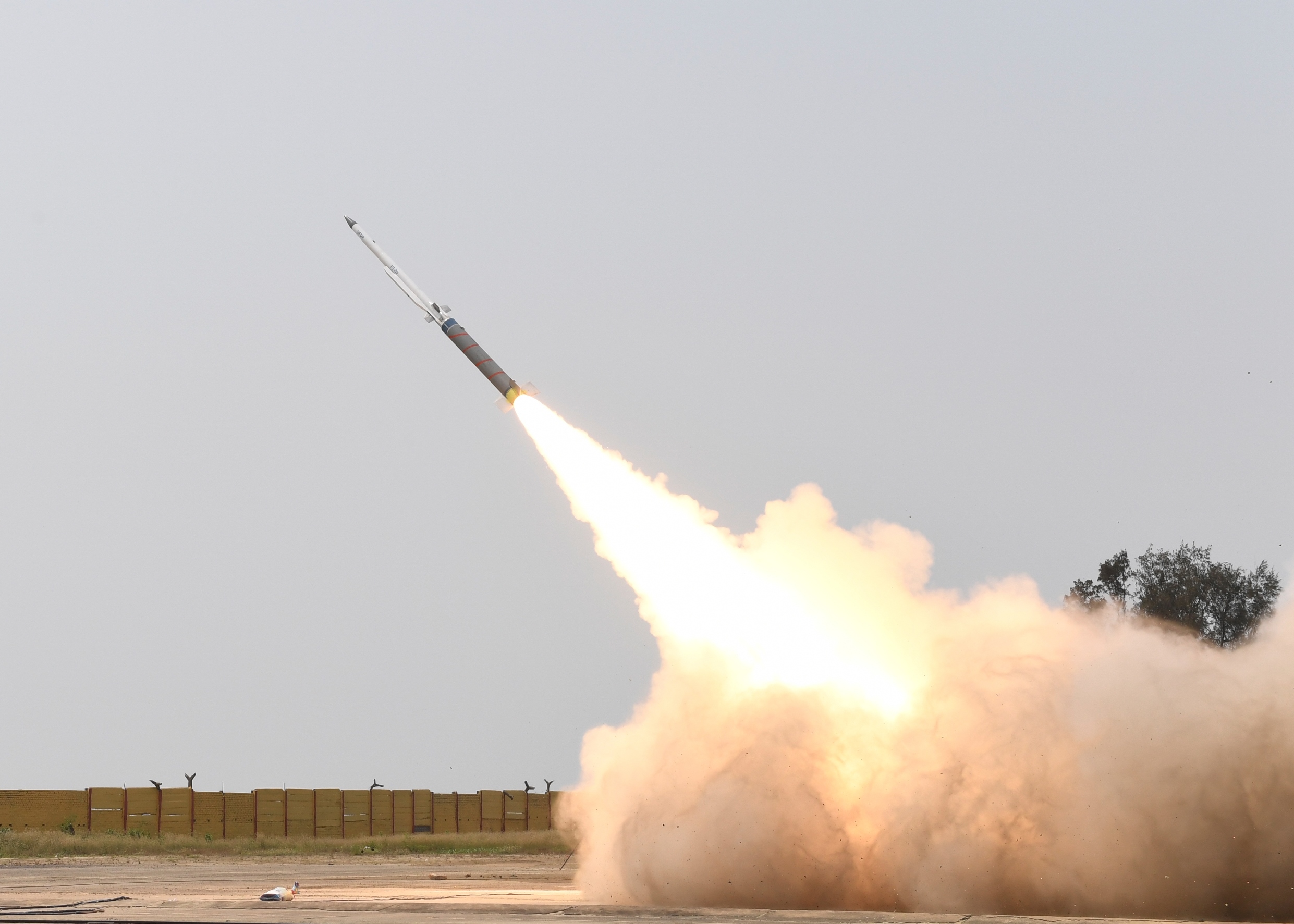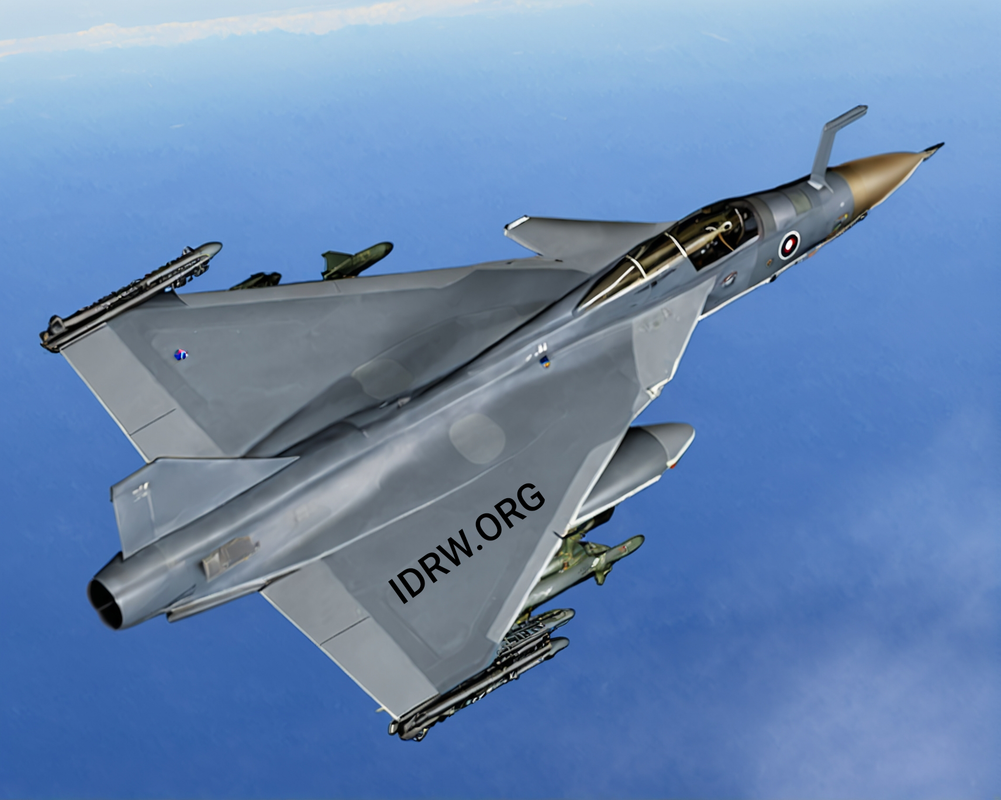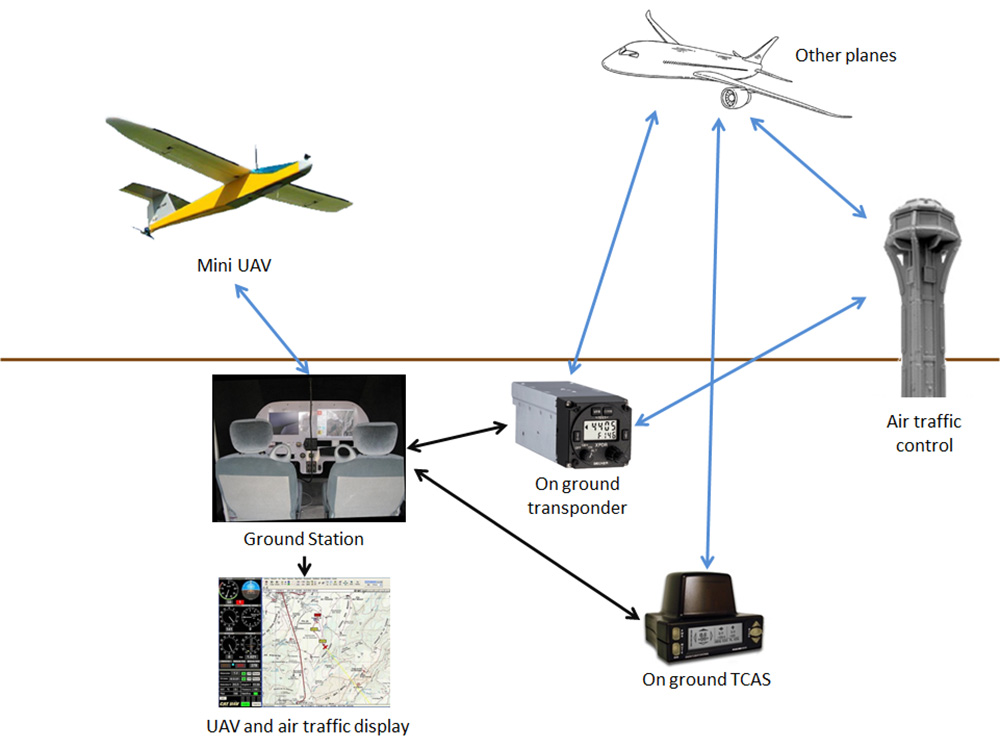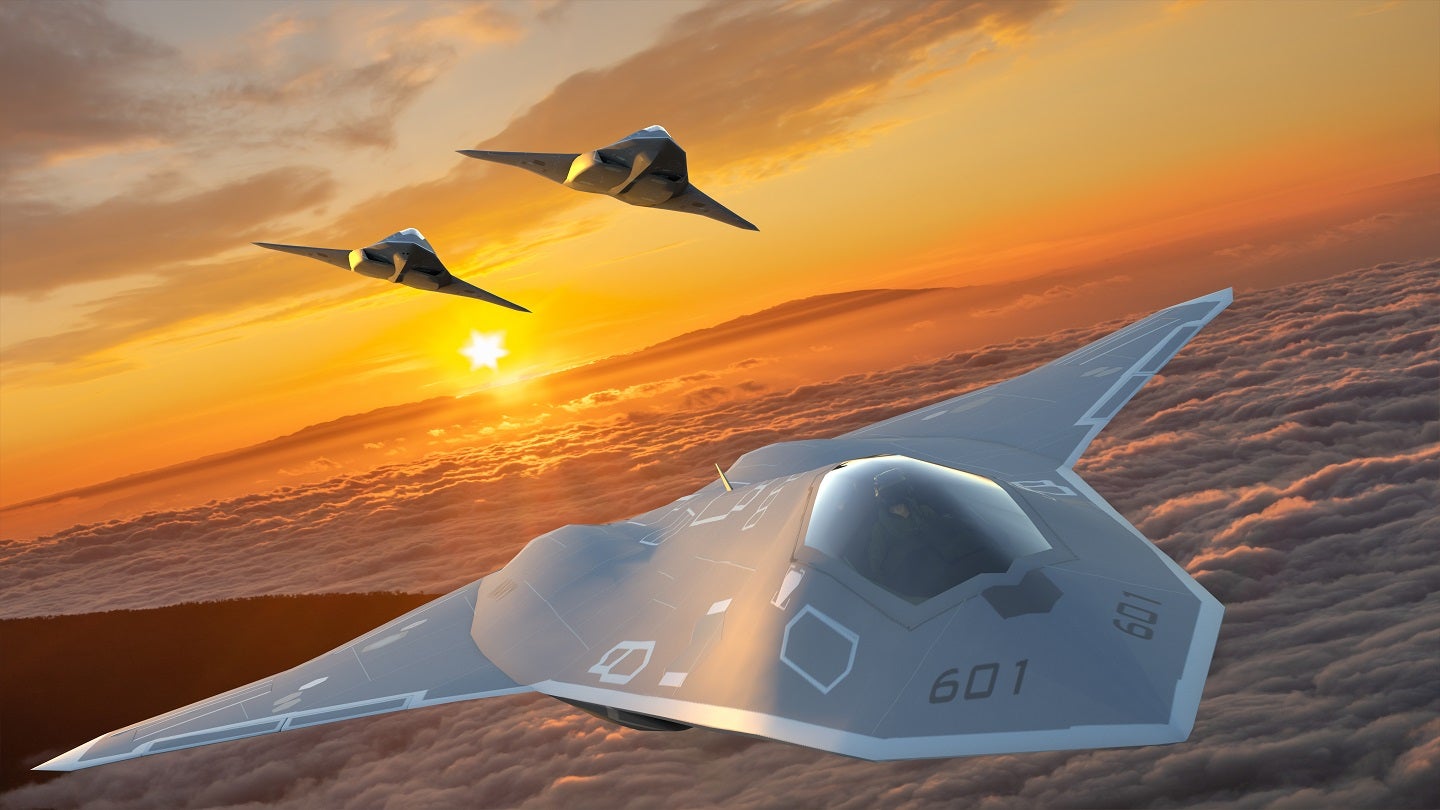SOURCE: AFI


In an enlightening interview at the Bharat Shakti YT Channale, Manoj Jain, the Chairman and Managing Director (CMD) of Bharat Electronics Limited (BEL), shed light on the capabilities of the MF STAR radar system, which is installed on many of India’s frontline warships. Jain’s revelations confirm the impressive range of this radar, setting the stage for enhanced naval defense capabilities through the integration of advanced missile systems like Project Khushab’s M1 and M2.
According to Manoj Jain, the MF STAR (Multi-Function Surveillance, Track and Guidance Radar) boasts a range of 400 nautical miles (approximately 750 kilometers). This extensive reach significantly extends the detection envelope for aerial threats, including fighter jets and Maritime Patrol Aircraft (MPA). The ability to detect enemy aircraft from such distances provides the Indian Navy with strategic advantages in terms of early warning and threat assessment.
Continue readingSOURCE: AFI


Recent pictures have surfaced of a new Chinese airborne early warning and control (AEW&C) aircraft, reportedly based on the four-engine Y-20 cargo plane. This development marks a significant advancement in China’s efforts to modernize its military aviation capabilities. With a robust AEW&C fleet largely composed of smaller turboprop platforms, this large, jet-powered AEW&C aircraft could serve as a successor or complement to the limited number of KJ-2000 Mainrings, which are built on the Russian Il-76 Candid airframe.
The adaptation of the Y-20 cargo plane into an AEW&C platform highlights China’s strategic foresight in leveraging indigenous designs for multiple roles. The Y-20, developed locally, provides a versatile platform with the payload capacity, range, and avionics suite to support various military applications. This move underscores the importance of self-reliance in developing military aviation infrastructure to meet evolving operational requirements.
Continue readingSOURCE: RAUNAK KUNDE / NEWS BEAT / IDRW.ORG


India’s Defense Research and Development Organisation (DRDO) has made significant strides with the Astra MK3, positioning it as a formidable contender in the realm of air-to-air missiles. Recent data showcases that the Astra MK3 boasts a 20% higher ramjet specific impulse compared to the European Meteor missile, suggesting that it could achieve greater speeds.
The ramjet specific impulse, which essentially measures the efficiency of the propulsion system in terms of thrust relative to fuel consumption, directly impacts the missile’s velocity. A 20% increase over the Meteor’s capabilities implies that the Astra MK3 can maintain higher speeds for longer periods, enhancing its engagement envelope during combat scenarios.
Continue readingSOURCE: RAUNAK KUNDE / NEWS BEAT / IDRW.ORG


India’s ambitious AMCA MkII (Advanced Medium Combat Aircraft) program, spearheaded by the Aeronautical Development Agency (ADA) and Hindustan Aeronautics Limited (HAL), is set to mark a significant milestone in the country’s quest for self-reliance in defence technology. To achieve a 90% indigenous component in the AMCA MkII, the project represents a crucial step in India’s broader push for greater indigenization in its defence sector. HAL aims to roll out the first AMCA MkII prototype by late 2028, with a focus on progressively increasing the use of domestic components as the program advances.
The AMCA MkII is designed to be a fifth-generation fighter aircraft, featuring cutting-edge stealth, advanced avionics, and high-performance capabilities. One of the key objectives of the program is to ensure that a significant portion of the aircraft’s components, systems, and technologies are of Indian origin. HAL and ADA have emphasized a target of 90% indigenous content in the AMCA MkII, setting the bar high for local manufacturing and technological development.
Continue readingSOURCE: RAUNAK KUNDE / NEWS BEAT / IDRW.ORG


The Tejas MkII program, a cornerstone of India’s push for indigenous defence capabilities, has received a firm commitment from the Indian Air Force (IAF) for the procurement of 120 jets. According to an IAF official who spoke to idrw.org, this commitment is expected to not only break the 200-unit mark but could potentially extend to as many as 250 units over the course of the next decade.
The IAF’s commitment to the Tejas MkII comes as part of its larger strategy to modernize and enhance its combat fleet. The IAF has already placed firm orders for 220 Tejas Mk1/Mk1A aircraft from HAL, with 32 units already inducted into service. In addition to these, 83 Tejas Mk1A aircraft are currently on order, and a further 97 units are planned. With Tejas MkI and MkIA deliveries ongoing, the IAF is well on its way to surpassing the 147 units of the HF-24 Marut (India’s first indigenous jet), which were produced over almost two decades.
Continue readingSOURCE: AFI


The Aeronautical Development Establishment (ADE) is pushing the boundaries of unmanned aerial vehicle (UAV) technology by developing an innovative sensor suite named “Due Regard Radar”. This initiative is part of ADE’s broader effort to enhance the safety and operational capabilities of UAVs through advanced Sense and Avoid systems.
The Due Regard Radar is designed to meet the critical requirement of non-cooperative detection, tracking, and avoidance of other aircraft, ensuring that UAVs can operate safely in shared airspace. Named after the International Civil Aviation Organization (ICAO) mandate for military aircraft to be flown with “Due Regard for the safety of navigation of civil aircraft”, this radar aims to provide UAVs with the ability to navigate complex airspace environments autonomously.
Continue readingSOURCE: AFI


Following the initial unveiling by popular open-source intelligence expert Damien Symon, new images have emerged showcasing the near-completion of Pakistan’s first spy ship, PNS Rizwan. Constructed by the People’s Liberation Army Navy (PLAN), this vessel marks a significant enhancement in Pakistan’s naval intelligence capabilities.
The PNS Rizwan, originally designated as an offshore supply ship, measures 87.2 meters in length with a beam of 19 meters. The ship features three prominent domes, believed to house sophisticated tracking equipment and radars. These features suggest that PNS Rizwan is equipped to perform extensive surveillance and intelligence-gathering missions, a critical facet in modern naval warfare.
Continue readingSOURCE: AFI


In a significant stride towards enhancing the combat readiness of India’s armed forces, Indo-Russian Rifles Private Limited (IRRPL) has successfully delivered 35,000 AK-203 rifles to the Indian Army. This delivery marks a crucial step in equipping our soldiers with one of the most reliable and modern assault rifles available, ensuring they have the best tools to defend our nation’s sovereignty.
The AK-203, affectionately dubbed ‘Sher’ (Tiger) by the troops, has received exceptional feedback from the brave officers and soldiers of the Indian Army. Their positive reception underscores the rifle’s effectiveness in various operational scenarios, from high-altitude warfare to counter-insurgency operations, validating IRRPL’s commitment to quality and performance.
Continue readingSOURCE: AFI


In a landmark move for India’s manufacturing sector, PTC Industries’ subsidiary, Aerolloy Technologies, has successfully commissioned the country’s first private sector Vacuum Arc Remelting (VAR) furnace, heralding a new era in domestic production of aerospace-grade titanium alloy ingots. The ceremony took place today in Lucknow, marking a significant step towards self-reliance in critical aerospace materials.
The newly inaugurated facility, sourced from Germany, boasts an impressive annual melting capacity of 1,500 metric tonnes (MT). It is capable of producing titanium alloy ingots with diameters up to 1,000 mm, catering to the stringent requirements of the aerospace industry. This development not only elevates India’s status in the global aerospace manufacturing landscape but also aligns the nation with elite countries like the United States, Russia, China, France, and the United Kingdom, known for their prowess in high-grade titanium production.
Continue readingSOURCE: IDRW.ORG


Hindustan Aeronautics Limited (HAL) is gearing up to captivate audiences at the upcoming Aero India 2025 with the debut of scale models of their latest innovation, the CATS Warrior wingman. This event promises to shed light on one of India’s most ambitious projects in unmanned aerial combat technology.
The CATS (Combat Air Teaming System) Warrior is a 2-ton, twin-engine Unmanned Combat Aerial Vehicle (UCAV) designed to serve as a loyal wingman to manned fighter jets. With capabilities to conduct strikes and enhance the effectiveness of combat missions by supporting manned aircraft, the CATS Warrior represents a leap forward in aerial warfare technology. Its primary functions include.
Continue readingSOURCE: IDRW.ORG

The Aeronautical Development Establishment (ADE), under the aegis of DRDO, is on the verge of achieving another milestone with the impending maiden flight of the Archer-NG, a Medium Altitude Long Endurance (MALE) UAV. According to Tarmak Media House (TMH), the high-speed taxi trials (HSTT) of the UAV have been successfully completed, paving the way for its debut flight.
Military sources confirmed to TMH that efforts are underway to conduct the first flight of Archer-NG before the much-anticipated Bengaluru Air Show, scheduled to begin on February 10, 2025. However, if the timeline proves challenging, the UAV is expected to fly by March 2025 at the latest.
Continue readingSOURCE: AFI


Tarmak Media House (TMH) has released exclusive images of the ADE-developed Archer Short-Range Unmanned Aerial Vehicle (SRUAV), showcasing the UAV in its latest manufacturing phase. The revamped Archer, distinct from the earlier Rustom-1 and unrelated to the NG variant, is nearing its first flight in its new configuration.
The Archer SRUAV has undergone significant design enhancements, including a lightweight airframe manufactured by Godrej, which has reduced the UAV’s weight by 80 kg. This reduction has not only improved its agility but also enhanced its payload capacity, allowing it to carry anti-tank weapons and bombs of equivalent weight. Archer’s revamped airframe positions it as an ideal platform for Intelligence, Surveillance, Target Acquisition, and Reconnaissance (ISTAR) missions, as well as armed roles.
Continue readingSOURCE: AFI


The United States Air Force’s ambitious Next-Generation Air Dominance (NGAD) fighter program is facing a critical reassessment, echoing the fate of the F-22 Raptor with potential for limited production numbers. Air Force Secretary Frank Kendall announced a pause on the NGAD program back in July 2024, following concerns over budget constraints, technological advancements, and the evolving threat landscape, particularly from armed drones.
The reassessment, led by acquisition chief Andrew Hunter and Vice Chief of Staff General James Slife, aims to scrutinize the program’s requirements in light of new technological developments and strategic necessities. The NGAD, envisioned as a sixth-generation stealth fighter to replace the aging F-22 Raptors, was initially projected to cost around $250 million per aircraft, a figure that has raised significant budgetary concerns.
Continue readingSOURCE: AFI


The aerospace industry has long been a battleground for technological supremacy, where nations leverage both innovation and acquisition strategies to bolster their military capabilities. China’s historical approach of reverse-engineering foreign aircraft has often been cited as a model of success, enabling it to bridge technological gaps at a lower cost while simultaneously educating its own workforce. Models like the J-11, J-15, J-16, Y-20, J-20, J-35, and J-7 are testament to this strategy. This raises a pertinent question for India: Should it adopt a similar approach?
Proponents argue that reverse engineering could provide India with several strategic advantages.
Continue readingSOURCE: AFI


In a daring New Year’s celebration, Prateek Dhawan, co-founder of the innovative Indian aerospace startup DG Propulsion, decided to combine the thrill of the new year with the prowess of his company’s latest achievements. Following the successful test of their 100kg engine, Dhawan chose to test the limits of fun and physics by attaching the DG J40, a smaller but still potent jet engine, to a bicycle. Here’s how the adventure unfolded:
The experiment began with the DG J40 at idle thrust. The bike moved forward smoothly, giving Dhawan and the small crowd of onlookers confidence in the setup. The engine’s hum was a gentle reminder of the technology’s capability, even in its least aggressive setting.
Continue reading